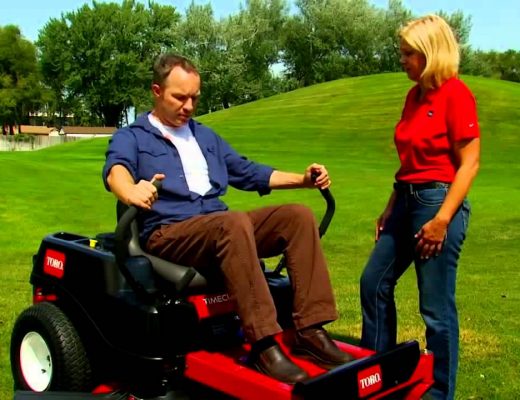Zero Turn Mower – How To Use It?
A zero-turn mower can mow almost twice as quickly as a traditional lawn tractor, so it is suitable for mowing large lawns. However, by using a non-traditional steering and propulsion system that can befuddle untrained operators, zero-turn mowers achieve their rapid performance. The most successful way to solve the befuddlement is to spend time in the driver’s seat, but learning a few tricks helps, too.
Of course, best zero turn mowers are able to make a turn of 180 degrees without going forward or backward. However, as the mower pivots around the non-moving wheels on the inside of the turn, doing so will produce an ugly gouge in the turf. This issue will be resolved by a three-point turn. Before the turn, a three-point turn involves bringing the mower to a stop, shifting both control levers in reverse and then performing the turn until the wheels shift backwards. This technique will prevent the turf from locking and tearing any of the wheels, and with practice, with little backward motion, you will achieve it.
 The purpose of learning how to efficiently and safely operate a zero-turn mower is practice. Two control levers are used to control most zero-turn mowers. Moving both levers forward allows the mower to go forward in a straight line, and reversing both levers makes the mower move in reverse. Moving only one lever lets the wheels roll either forward or backward on that side of the mower, so you gain a turn by moving the levers independently of each other. This system means that, as on most traditional lawn tractors, steering, acceleration and braking are all operated manually with the levers rather than with a steering wheel, throttle and brake pedals. For operators switching from tractor mowers to zero-turn mowers, preparation and practice are necessary in order for them to learn operating practices that may seem counter-intuitive at first.
The purpose of learning how to efficiently and safely operate a zero-turn mower is practice. Two control levers are used to control most zero-turn mowers. Moving both levers forward allows the mower to go forward in a straight line, and reversing both levers makes the mower move in reverse. Moving only one lever lets the wheels roll either forward or backward on that side of the mower, so you gain a turn by moving the levers independently of each other. This system means that, as on most traditional lawn tractors, steering, acceleration and braking are all operated manually with the levers rather than with a steering wheel, throttle and brake pedals. For operators switching from tractor mowers to zero-turn mowers, preparation and practice are necessary in order for them to learn operating practices that may seem counter-intuitive at first.
Another aspect to remember is space, and the first rule of mowing a lawn easily eliminates this one: Don’t go twice over the same patch. In an unimpeded patch of grass, this knocks out several well-meaning but evidently inefficient paths. The ability to mow at higher speeds than a traditional tractor is one of the key benefits of a zero-turn mower, but mowing at high speed can be a challenge for new operators. Mowing at high speeds allows you to be able to respond rapidly when you need to stop, and a zero-turn mower’s braking system varies from that of traditional mowers.
Most zero-turn mowers do not have a foot brake pedal; by switching both steering levers to the neutral position, braking is achieved. For the operators used to operate a tractor, the lack of a brake pedal is counterintuitive, and the need to shift both control levers to stop the mower requires a more concerted effort on the part of the operator.
For operators switching from tractor mowers to zero-turn mowers, preparation and practice are necessary in order for them to learn operating practices that may seem counter-intuitive at first.








